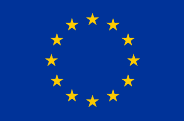
Safe non-food consumer Products in the EU and China
This factsheet applies to baby swings. Baby swings include swings intended for children up to a weight of 9kg or unable to sit up unaided. Toy swings falling under the scope of EN 71‑8 are excluded from the scope of this document.
This is a list of examples of common risks. However, the manufacturer has to carry out an assessment of the product that covers all relevant risks that may be associated with it and actions taken to mitigate these where possible. A general definition of risk and its relationship to hazards can be found in the factsheet on Risk management.
1. Mechanical/physical risks:
2. Chemical risks:
3. Thermal risks:
4. Hygiene risks:
A general definition of risk and its relationship to hazards can be found in the factsheet on Risk management.
Specific examples of measures taken against dangerous baby swings offered for sale in the European Union are available on the Safety Gate website. Type ‘baby swing’ into the free text search box (but without the quotation marks) and select the ‘Childcare articles and children’s equipment’ Product Category to view notified examples. A better understanding of mistakes made in the safety assessment of the baby swings or its manufacture can help avoid their repetition.
Please note that every product must be safe for consumers, according to the General Product Safety Directive (GPSD) of the EU. This is the applicable law covering baby swings.
Under the Directive, a product is safe if it meets all legal safety requirements under European or national law.
A ‘safe product’ shall mean –
any product which, under normal or reasonably foreseeable conditions of use, does not present any risk or only the minimum risks compatible with the product’s use, considered to be acceptable and consistent with a high level of protection for the safety and health of persons
It is important to take into account the following points in particular:
It is essential for manufacturers to consider whether their products might also have a ‘play value’ to a child, e.g. because it has a rattle effect or some other toy or play item attached to it (i.e. a plush toys attached to the strap). This is because products which have play value are considered as toys and must comply with all the requirements of the Toy Safety Directive 2009/48/EC. To be considered as a toy for the purpose of the Directive, the play value has to be introduced in an intended way by the manufacturer. The EU has issued a good deal of guidance on toy safety to help manufacturers, and this includes guidance document no. 4 which can be found here will specifically help manufacturers consider the issue of childcare articles which may also fall within the definition of being a toy.
Comprehensive factsheets on the requirements concerning toys can be found here.
“European standards” exist in the EU for some childcare products, that have been published in the Official Journal of the European Union (OJEU). A product complying with these standards is presumed to meet the EU safety requirements. Further information on, and the list of standards for childcare articles is available from here.
[Note: European standard published in the official Journal of the European Union is called “harmonised standard” when it is adopted on the basis of Union harmonisation legislation. When a EN standard is published in the OJEU under the GPSD, that is a general Directive (non-harmonisation legislation), it cannot be called harmonised standard. In general, EN standards published in the OJEU give the legal effect of presumption of conformity to the products complying with these.]
The following standard specifically apply to baby swings:
EN 16232:2013+A1:2018 Child use and care articles – Infant swings
The standard is not a published in the OJEU. However, it does cover key hazards such as chemical, thermal and mechanical (entrapment, choking, slipping, suffocation etc.).
The standard specifies detailed testing requirements which should be followed.
The standard covers other safety issues and manufacturers are strongly advised to consult the whole standard and any other possible hazards and requirements that affect their product.
EN 16232:2013+A1:2018 is not published in the OJEU but it refers to part of EN 71, the toy standard, as normative reference, which is published in the OJEU.
Note: The full text of European standards can only be purchased from a national standardisation body. The following site of CEN (the European standardisation organisation) provides links to the national standardisations bodies’ websites. In addition, the China Standards Information Services Network can be used to access European standards.
The following summarises some further key applicable laws:
All product information must be given in the official language(s) of the country in which the baby swing is sold.
To ensure safety of baby swings, there is also a range of general requirements to be fulfilled. These are explained in the following factsheets and need to be read in conjunction with this factsheet:
You may also visit the SPEAC ACADEMY to learn more about the EU Safety requirements.
The provided information was updated in 2022. Please note that some of the provided information could change during possible subsequent revisions of legislation, standards, and guidance documents. For any updates of official information on the EU product safety rules, please follow the Link to the webpage of the European Commission.
This document was produced with the financial support of the European Union. Its contents are the sole responsibility of SPEAC project and do not necessarily reflect the views of the European Union.

This website was created and maintained with the financial support of the European Union. Its contents are the sole responsibility of SPEAC project and do not necessarily reflect the views of the European Union.